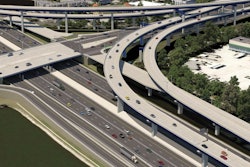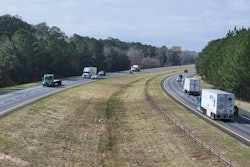
Designs for a new cable-stayed, bi-level, independent deck bridge to join the Brent Spence Bridge connecting Cincinnati, Ohio, to Covington, Kentucky, have been revealed.
Ohio Governor Mike DeWine and Kentucky Governor Andy Beshear jointly unveiled the design for the bridge, which will be a companion structure for the eight-mile Brent Spence Bridge Corridor Project. The estimated cost of the entire project, including updates to other portions of the corridor, comes to $3.6 billion, to be paid jointly by the states.
Walsh Kokosing – a joint venture of Walsh Group, Kokosing and AECOM – is the prime contractor for the entire Brent Spence Bridge Corridor Project. The group will construct the companion bridge west of the existing 60-year-old span, which is carrying double its original traffic capacity of 80,000 vehicles a day.
The Brent Spence Bridge, which opened in 1963, is a double-decked, truss bridge carrying Interstates 71 and 75 just over 0.3 miles across the Ohio River in both directions. The bridge will be updated to three lanes on each deck with emergency shoulders. Other projects part of the Brent Spence Bridge Corridor, which covers eight miles of I-71/I-75, include improvements to the existing bridge, redesigning ramp configurations and new pedestrian and bike paths.
Both the companion bridges' upper and lower decks will be supported by a cabling system similar to those used on the Abraham Lincoln Bridge in Louisville and Veterans Glass City Skyway in Toledo. No steel work will be used to connect the two decks.
Northbound drivers will use the upper deck to cross the Ohio River into Cincinnati, which will showcase the city's skyline and the bridge’s unique design.
When considering what design to use for the bridge, the Ohio Department of Transportation and the Kentucky Transportation Cabinet collaborated on key visual and aesthetic criteria, including its potential to become a regional landmark and its visual connection to the existing bridge. The bi-level, cable-stayed design also has the benefit of lower cost and less difficulty to build.
“For decades, communities have waited for a safer, more efficient crossing that not only eases traffic and improves safety but also strengthens one of our most critical freight corridors,” said ODOT Director Pamela Boratyn. “This new bridge will unlock economic opportunities, support regional growth and better connect people and commerce for generations to come.”











